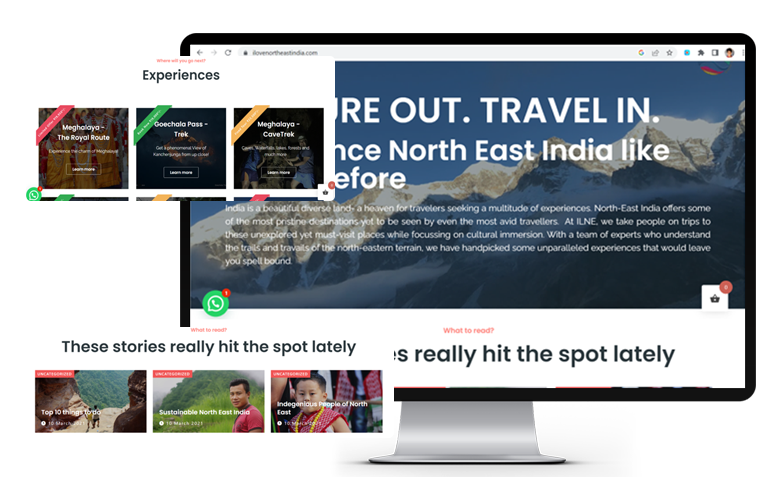
We’ve all been there. Arguing with somebody, knowing fully well their views won’t change. What we often dismiss as stubbornness or hard-headedness, might actually be a term called ‘confirmation bias’. There’s a reason that some people are more inclined to believe one set of views more than the other. It’s because the former lines with the worldview that already exists in their head, and is easier to accept.
Confirmation bias is a psychological pattern that warps our perception and leads to a systematic assimilation of only that information that is in line with our existing beliefs.
The 2020 US Elections were a close call. States that were coloured red for days turned blue before the verdict. Have you ever thought about why politics is so polarizing? For a dedicated follower of one party or candidate who wholeheartedly believes that all the information is clearly pointing to their chosen candidate being the best suited option, it becomes next to impossible to imagine why somebody would think otherwise when the opposition is such a blatantly wrong choice. But that’s just it. Not all of us consume or process information in the same manner.
Confirmation bias can show its cunning head in many ways – in the ways you gather information, in the ways you recall information, in the ways you interpret information and in the ways you reject certain pieces of information and accept others.
Even doctors fall prey to confirmation bias. Doctors who begin to subconsciously link a patient to a diagnosis after only hearing the first few symptoms, are more likely to miss key components in the further symptoms that could be a red light pointing to a different diagnosis.
So by now, we’ve gotten a surface level grasp on confirmation bias as a psychological loophole. But how exactly is it useful to marketers? How do brands use it to their advantage?
1. Using stereotypes to their benefit
What is the first thing that pops into your head when I talk about Italians? Probably hand gestures, a love for food and a vigor for life. This is due to the fact that that’s how you’ve seen Italians depicted in popular culture. While stereotyping is not the best practice from an open minded generational point of view, it helps brands sell!
If people already have preconceived notions that Italian food is the gold standard, simply stating that their food product is manufactured there or utilizes their produce, could help marketers raise a lot of eyes and turn a lot of heads their way!
2. Focusing on brand loyalty and customer retention
‘Apple’ is a great example of brand loyalty. Every new product launch is followed by a flood of memes and jokes over the inflated price that doesn’t equate the inflation in features. But what it is also followed by is lines of people in front of Apple stores, maxing out pre-orders of the product and loyal customers exchanging their older versions of Apple products for the new ones.
This is a great example of confirmation bias leading to brand loyalty and customer retention. How does a brand achieve this? By starting off with a bang! Apple established its place early on as the leading tech company. By not getting into the market with sub par products and then improving upon them, but rather building an image as the game-changer, the trailblazer, the one to look out for from the get-go helps brands a ton. A focus on quality, ingenuity and uniqueness in the products or services that they offer is at the heart of why customers are attracted to a brand. Once an image has been formed for a brand and they’ve satisfied customers with their quality, people will be more willing to continue to buy from the same brands rather than challenge their previous views to try out a different one.
The quality of products or services cannot be stressed upon here enough. Brands carry out enough market research, R&D, and trial and error to ensure that they enter the market space with the best of the best. If their quality speaks volumes, it helps prevent buyer’s remorse in customers and keeps them coming back for more.
Also, rewarding returning customers for their loyalty is another trick that brands use. Offering add-ons, freebies and additional discounts and sales to loyal customers to attract them to maintain that loyalty is a proven source of customer retention.
3. Making advertisement their main center of attention
With the market space being flooded with more and more products in the same categories, advertisement has become the bread and butter of any successful company. A proven best way to set up an advertisement campaign is to focus on the pain points of your target audience and showcase them in the campaigns.
Targeting pain points is what sells. The best products/services rise out of a necessity, and that is directly proportional to sales. The most successful brands understand what the needs of their target market is and keep highlighting them.
Suppose you’re a brand targeting women managing a family and a career. Display them in ad campaigns. Exhibit their struggles. Show content that will allow them to see themselves in your ad campaigns and associate your advertisements with themselves. It is easy to imagine how this will allow your audience to visualize your product or service in their lives and inculcate it seamlessly into their routines.
4. Leveraging the power of testimonials
Customer reviews, testimonials, money-back guarantees all while may not seem like an immediate necessity, ultimately are a huge guiding light to sales because they target the psychology of buyers.
Believing that their money is going in the right place and will not be spent with no use is a big chunk of what drives customers to buy.
If enough customer reviews say that a product does what it says it does, the brain tells you to go the easy route and believe them. If enough testimonials are positive and the brand has concurrent ratings to show for it, customers will be much more likely to buy the product or service.
5. Being immune to falling prey to confirmation bias themselves
While marketers are aiming to target the confirmation bias psychological hack of customers, they too can overlook certain details due to their own prejudice relating to their product.
For example if brands conduct market research with already a notion of what the audience will say in their minds, they will be more likely to reject the information that hints otherwise no matter how glaringly obvious it may be. Triumphant brands listen to their customers sans any bias.
Conclusion
Psychological hacks are one of the biggest hidden weapons that marketers can use to their advantage, and confirmation bias is one of the easiest cognitive distortions to target and leverage.
It allows customers to seek only those products and accept only those ad campaigns that do not pierce their comfortable bubble of premade worldview and marketers that are able to toy with this knowledge are much more likely to sell with a layer of ease.










